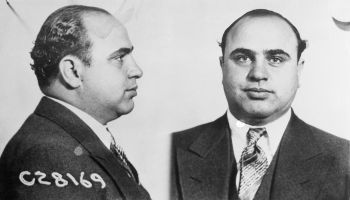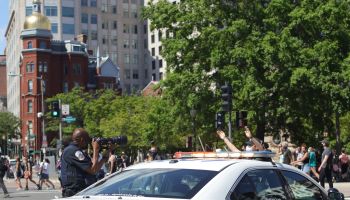Serious gang-related crime in Northern Virginia has dropped since 2004, but officials are concerned that middle schools are emerging as epicenters of gang activity and recruitment, according to a report from the Northern Virginia Regional Gang Task Force.
In 2007, according to the report, middle schools accounted for about 35 percent of gang offenses in the area’s public schools, compared with about 27 percent in 2003. Still, gang offenses in public schools in 2007 were down about 37 percent from a high point the year before, the report said.
In releasing the Northern Virginia Comprehensive Gang Assessment, a study of the region’s gang activity from 2003 to 2008, officials emphasized that although middle school gang activity is a concern, gangs are less of a problem in Northern Virginia and its schools than they are elsewhere. They credited the task force and a strong regional economy.
“The task force is working. It is making a difference,” said Rep. Frank R. Wolf (R-Va.), who was instrumental in forming the group. “People are looking to this area for what is a growing problem nationwide.”
Across Northern Virginia, gang members are responsible for 5 percent of violent crime and 2 percent of crime overall, according to the report. Law enforcement officials estimate the number of gang members in the area at 5,000 and the number of gangs or cliques at 80 to 100. About 3,000 of the gang members come from Mara Salvatrucha, or MS-13, but the Southside Locos, Bloods, Crips and 18th Street also have significant a regional presence.
The crime numbers, too, are dropping. Serious gang crimes fell by 17 percent between 2004 and 2008, due in part to large decreases in violent crimes against people (12 percent), larcenies (20 percent), robberies (32 percent) and burglaries (18 percent), according to the report. Inside the schools, “dangerous” weapons violations, illegal drug use and physical violence all dropped.
“Unlike many settings in the United States . . . gangs in Northern Virginia have failed to gain an entrenched foothold,” said Kenneth F. Billingsley, the director of information and demographic services for the Northern Virginia Regional Commission and the report’s author.
“There is no evidence in the data to suggest a worsening of the conditions in Northern Virginia public schools.”
No police officers from anti-gang units spoke at the news conference, and Arlington and Fairfax counties declined to make any available for comment on the report afterward.
Despite the good news in the report, more and more students are forging their first gang ties at younger ages, Billingsley said. In interviews with 50 current and former gang members and their associates, researchers found that 75 percent of gang members joined by age 14 and 25 percent joined by age 12, according to the report.
Immigration and shifting demographics are also cause for concern, authorities said. More than 40 percent of the gang members arrested by the regional gang task force were charged with a U.S. Immigrations and Customs Enforcement violation, according to the study.
Gangs are “still a threat,” said Loudoun County Sheriff Stephen O. Simpson. “They’re still here. They’re still living in the communities.”
The study looked at crime data from the major Northern Virginia police jurisdictions, including Arlington, Fairfax, Fauquier, Loudoun and Prince William counties, and Alexandria, Fairfax City, Falls Church, Manassas, Manassas Park, Dumfries, Herndon, Leesburg, Purcellville, Vienna and Warrenton. It was funded by a Justice Department grant awarded to the task force.
- Libya: Entertainment, Food, Languages, Places To Visit + More
- Algeria: Entertainment, Food, Languages, Places To Visit + More
- Egypt: Entertainment, Food, Languages, Places To Visit + More
- South Sudan: Entertainment, Food, Languages, Places To Visit + More
- Morocco: Entertainment, Food, Languages, Places To Visit + More














